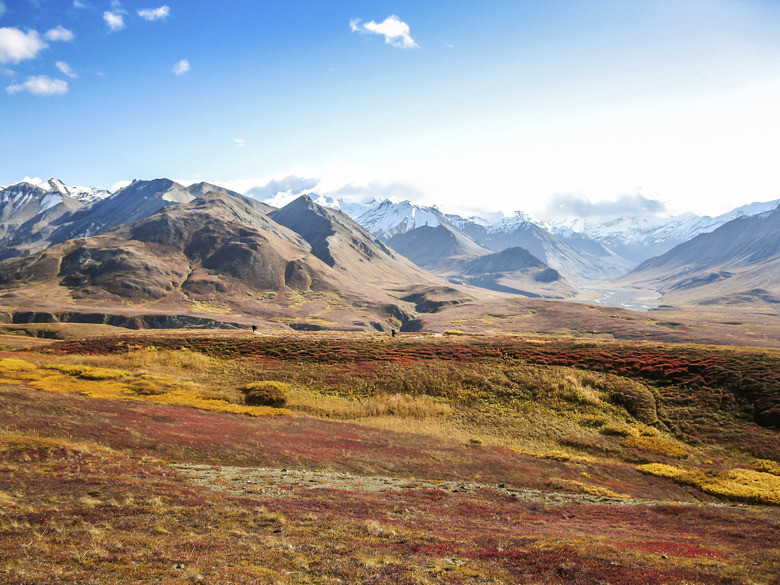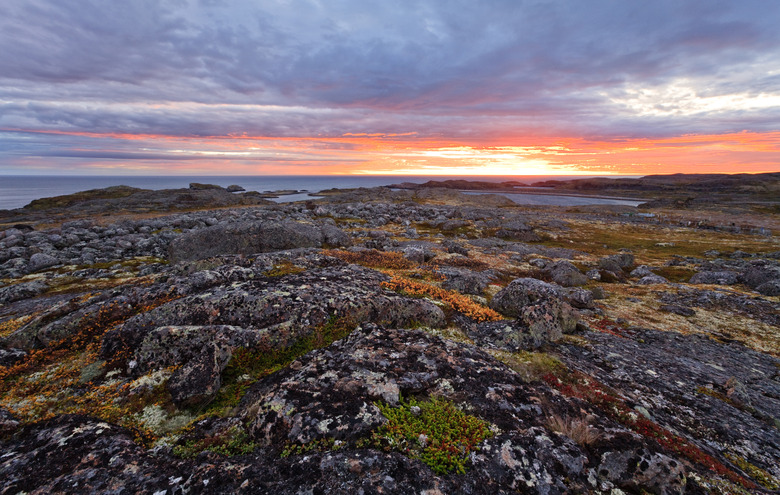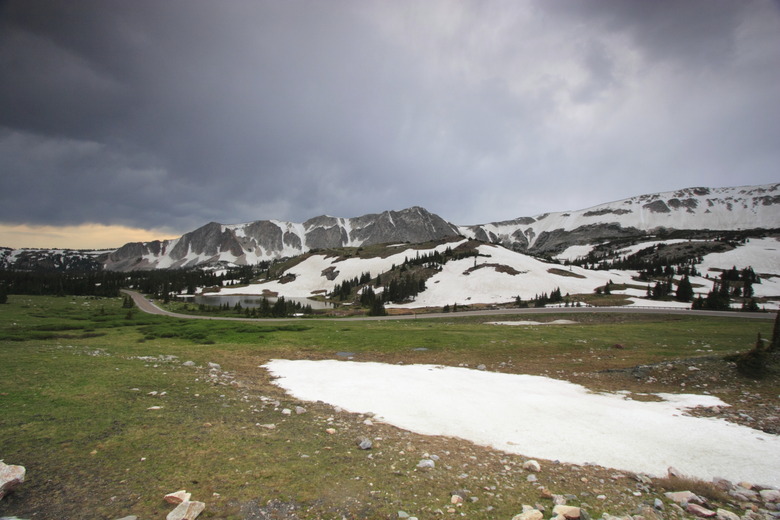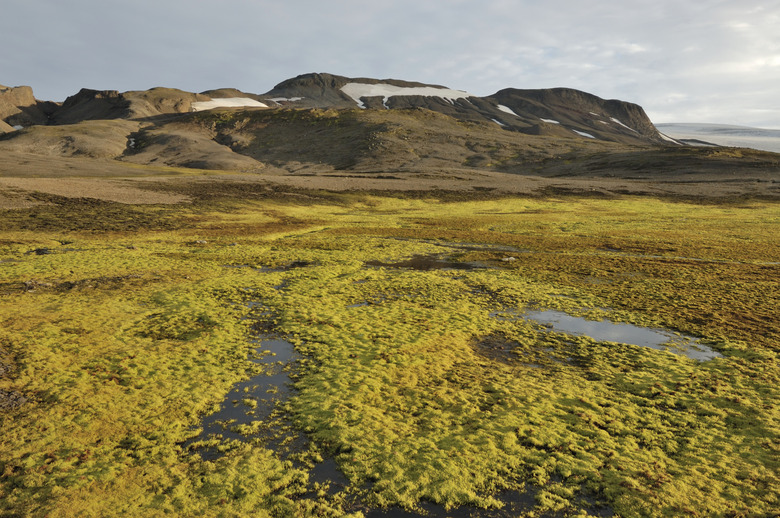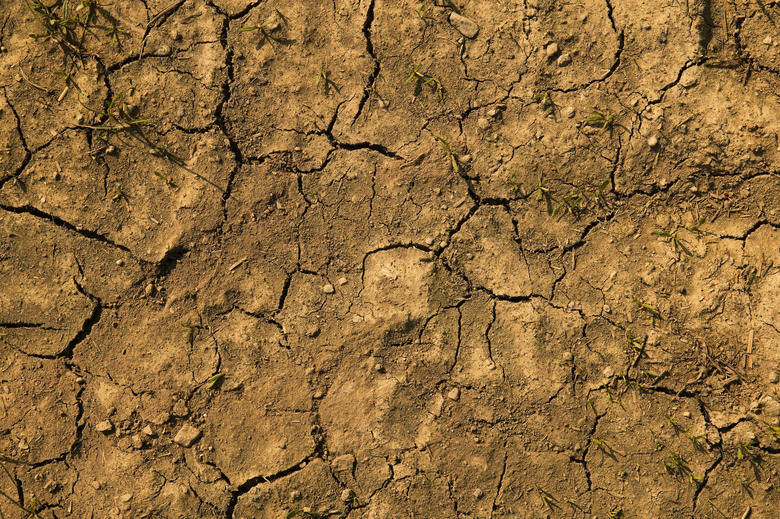Landforms Of The Tundra
The tundra is characterized by its freezing temperatures, short summers and sparse rainfall. This climate contributes to the development of landforms unique only to the tundra. Ground moisture is unable to evaporate due to temperature range and is prohibited from being absorbed into the soil because of the presence of permafrost — a layer of permanently frozen soil. A layer of soggy topsoil cyclically freezes and thaws, giving rise to a number of interesting landforms.
Bumpy Ground
Bumpy Ground
Plant cover, rocks and bodies of water retard natural thawing and freezing patterns of the ground. The ground is abnormally pushed and pulled, producing tiny hills, valleys, slopes and porous regions. Frost mounds exist extensively on open terrain and consist of 10 to 15 feet ice cores covered by soil or peat that do not penetrate permafrost.
Frost Boils
Frost Boils
Continuous thawing and freezing pushes fragments of stone outward in a ringed pattern. Coarse stones encircle clay, silt and gravel, according to the Alaskool website. These rock patterns continue to expand over the top layer of soil and may grow up to 30 feet in diameter. Sloping land contributes to solifluction — the downward flow of soggy soil — and strands of rock stretch into elliptical patterns as they travel downward.
Stripes
Stripes
The exaggerated stretching of frost boils on hillsides by means of solifluction produces parallel strands of rock and soil, or stripes. Thawing and freezing sorts rocks by their particle size on very steep slopes that range from five to 30 degrees, according to the Alaskool website.
Pingos
Pingos
Pingos are hills of frozen ground that trap bodies of water beneath them. Pingos form in one of two ways and exist within an open system or a closed system. Open-system pingos occur when water above permafrost makes its way through the permafrost layer beneath it. A film of ice and water forms beneath the permafrost, freezes and heaves upward due to pressure. Closed-system pingos are created when thawed bodies of water interact with exposed permafrost. Permafrost surrounds a body of water, freezes around it and forms a mound. The mound's summit will eventually crack, melt and produce a tiny ice crater filled with water.
Polygons
Polygons
When the ground contracts because of freezing temperatures, geometric land shapes form, according to the ThinkQuest website. Polygons range from 10 to 100 feet wide and are surrounded by deep rifts that fill with water. Cracks can deepen and widen, resulting in pond and stream formation. Frozen water and snow may also collect in the rifts and produce ice wedges.
Cite This Article
MLA
Conner, Jessica. "Landforms Of The Tundra" sciencing.com, https://www.sciencing.com/landforms-tundra-7575771/. 24 April 2017.
APA
Conner, Jessica. (2017, April 24). Landforms Of The Tundra. sciencing.com. Retrieved from https://www.sciencing.com/landforms-tundra-7575771/
Chicago
Conner, Jessica. Landforms Of The Tundra last modified August 30, 2022. https://www.sciencing.com/landforms-tundra-7575771/
